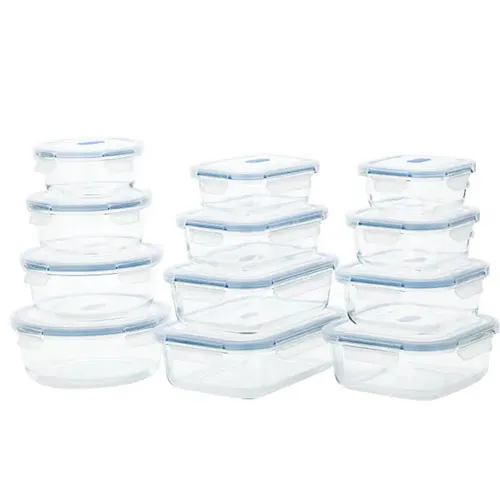 TEL: +86 311 67799298
TEL: +86 311 67799298 Email: tina@yintoglassware.com
Email: tina@yintoglassware.com
Baking Techniques Using Glass Bakeware for Perfect Results Every Time
Baking with a Glass Dish A Perfect Blend of Functionality and Aesthetic
Baking evokes a warm, inviting atmosphere in any kitchen, and the choice of bakeware can significantly impact the results. Among the myriad of options, glass dishes have become increasingly popular among both novice bakers and seasoned chefs. Beyond their aesthetic appeal, glass baking dishes offer practicality that can enhance your culinary experience. In this article, we’ll explore the benefits of using glass for baking, tips for optimal use, and some delicious recipes that showcase the versatility of glass bakeware.
The Advantages of Glass Baking Dishes
Glass baking dishes, typically made from tempered glass, provide multiple advantages that make them a preferred choice in many kitchens
1. Even Heat Distribution One of the primary benefits of glass bakeware is its excellent ability to distribute heat evenly. This characteristic helps ensure that your baked goods cook uniformly, reducing the risk of overcooked edges and undercooked centers—a common issue in metal pans.
2. Visibility One appealing aspect of using glass dishes is that they are transparent. This allows bakers to monitor the browning and cooking process without having to remove the dish from the oven, making it easier to achieve perfect results.
3. Non-Reactive Surface Unlike aluminum or certain metal bakeware, glass is non-reactive. This means it won’t react with acidic ingredients, such as tomatoes or citrus, ensuring that the flavor of your dish remains unchanged.
4. Easy Cleaning Glass baking dishes are generally dishwasher safe and easy to scrub clean, making post-baking cleanup a breeze. Moreover, they are less likely to retain odors or stains compared to plastic or some metal options.
5. Versatility Glass dishes can transition seamlessly from the oven to the table. Their beautiful design means you can serve directly from the baking dish, reducing the need for extra serving ware and minimizing cleanup.
Tips for Baking with Glass Dishes
While glass baking dishes are user-friendly, there are a few tips to consider to ensure your baking experience is optimal
- Adjust Baking Temperatures When using glass, you may need to reduce the oven temperature by about 25°F (around 14°C) compared to recipes that use metal pans. Glass can get hotter faster, which may lead to overbaking if not adjusted.
baking with a glass dish

- Avoid Thermal Shock To prevent your glass dish from breaking, avoid sudden temperature changes. Don’t place a cold glass dish directly into a preheated oven. Instead, let it acclimate to room temperature before baking.
- Grease Wisely While glass dishes are often non-stick, it's still a good practice to lightly grease or line them, especially when baking items that tend to stick, such as lasagna or cakes.
- Watch Cooking Times Baking times may vary slightly when using glass, so keep a close eye on your food
. It's best to start checking for doneness a few minutes earlier than the recipe recommends.Delicious Recipes to Try
Now that you’re equipped with the benefits and tips for baking with glass dishware, why not try out a few recipes?
Classic Glass Dish Lasagna
Ingredients No-boil lasagna noodles, marinara sauce, ricotta cheese, shredded mozzarella, grated Parmesan cheese, and your choice of vegetables or ground meat.
Instructions 1. Preheat your oven to 375°F (190°C). 2. In a glass baking dish, spread a layer of marinara sauce. 3. Layer with lasagna noodles, followed by ricotta, mozzarella, and any additional ingredients. 4. Repeat the layers, finishing with a layer of noodles topped with marinara and mozzarella. 5. Cover with foil and bake for 25 minutes. Remove the foil and bake for another 15 minutes until bubbly and golden.
Easy Glass Dish Fruit Crisp
Ingredients Sliced seasonal fruits (like apples or berries), oatmeal, brown sugar, flour, cinnamon, and butter.
Instructions 1. Preheat your oven to 350°F (175°C). 2. In a glass dish, combine fruits and sprinkle with a bit of sugar. 3. In a separate bowl, mix oatmeal, brown sugar, flour, and cinnamon, then add melted butter to form a crumble. 4. Spread the crumble over the fruit and bake for 30-35 minutes until the topping is golden.
In conclusion, baking with a glass dish not only enhances your culinary outcomes but also adds a touch of elegance to your kitchen. With their numerous benefits and the ability to create stunning presentations, glass bakeware is indeed a staple for any baking enthusiast. So get your favorite glass dish out, and let the baking adventures begin!
-
Unparalleled Convenience by High Borosilicate Glass Bottle with a Cork LidNewsJul.17,2025
-
The Versatility and Convenience of Glass Salad Bowl SetsNewsJul.17,2025
-
The Practical Wide Application of High Borosilicate Glass Food Storage ContainerNewsJul.17,2025
-
High Borosilicate Colored Glass Bowl VS Soda-Lime Glass and Tempered GlassNewsJul.17,2025
-
Creativity with Customized Colored Glass Dinnerware Sets for SaleNewsJul.17,2025
-
Advantages Analysis of Double Wall French PressNewsJul.17,2025









